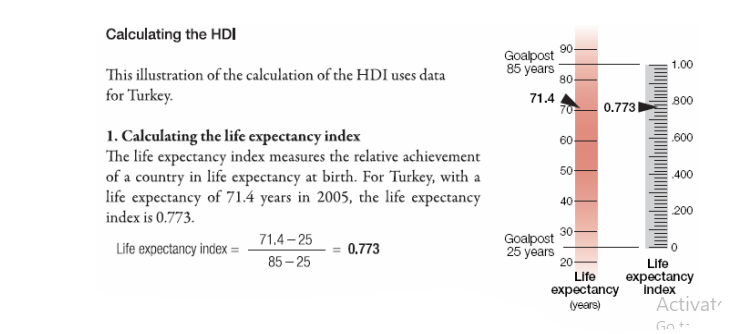Genuine Progress Indicator (GPI)
GPI is a concept in welfare economics that has been suggested to replace gross domestic product (GDP) as a metric of economic growth.
GPI is an attempt to measure whether a country’s growth, increased production of goods, and expanding services have actually resulted in the improvement of the welfare (or well-being) of the people in the country. GPI advocates claim that it can more reliably measure economic progress, as it distinguishes between worthwhile growth and uneconomic growth.
The GDP vs the GPI is analogous to the difference between the gross profit of a company and the net profit; the Net Profit is the Gross Profit minus the costs incurred. Accordingly, the GPI will be zero if the financial costs financial gains in production of goods
and services, all other factors being constant. Advocates of GPI assert that in some situations, expanded production facilities damage the health, culture, and welfare of people. Growth that was in excess of sustainable norms had to be considered to be uneconomic
The Human Development Index (HDI)
HDI is a summary measure of human development that is published by the United Nations Development Programme (UNDP). HDI measures the average achievements in a country in three basic dimensions of human development:
- A long and healthy life, as measured by life expectancy at birth.
- Knowledge, as measured by the adult literacy rate (with two-thirds weight) and the combined primary, secondary and tertiary gross enrollment ratio (with onethird weight).
- A decent standard of living, as measured by GDP per capita in purchasing power parity (PPP) terms in US dollars.
Before the HDI itself is calculated, an index is created for each of these dimensions. To calculate these indices—the life expectancy, education and GDP indices—minimum and maximum values (goalposts) are chosen for each underlying indicator. For example, in 2004 the maximum and minimum values for life expectancy were 85 and 25 years, Adult literacy rate (%) 100 and 0, Combined gross enrolment ratio (%) 100 and 0, GDP per capita (US$) 40,000 and100 respectively. Performance in each dimension is expressed as a value between 0 and 1. The HDI is then calculated as a simple average of the dimension indices:
HDI = 1/3 (life expectancy index) + 1/3 (education index) + 1/3 (GDP index)

The Indicator Problem
When the term indicator is used in the following, it refers to data and ‘simple’ statistical composites (e.g. gross domestic product and life expectancy) which are recognized as analytic decision-making tools. Highly composite index-type indicators (e.g. human development index) are explicitly excluded here. The main problems can be stated as follows:
Proliferation of indicators- The sheer volume of development indicators and the lack of information on how similar indicators are related makes it difficult for analysts and decision makers to use them.
Inconsistencies among indicators- Despite references to seemingly identical indicators, there exists differences in the definition, in the use of data sources, in the compilation method, in the periodicity etc., which lead to different numerical values.
Validity of indicators- Sources, definitions and compilation/ estimation methods are not always made explicit. The lack of adequate referencing and of technical notes deprives the user of making an informed quality assessment.
Separation of indicator development from basic data collection at country level Insufficient attention is given to improving the quality and comprehensiveness of basic data from which indicators are derived.
Overburdening of national statistical systems- Competing demands and poor overlap1 of internationally formulated indicator sets increase the reporting burden of national statistical agencies. Ad hoc requests by international agencies lead to ad hoc data collection, crowding out limited financial and human resources and, thus, interfering with regular national statistical programmes.
Inefficient use of statistical resources- At present agencies does not share information coming from the country level optimally. There are potential efficiency gains by organizing better the flow of information.
